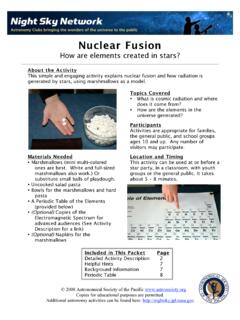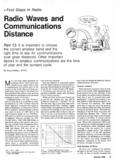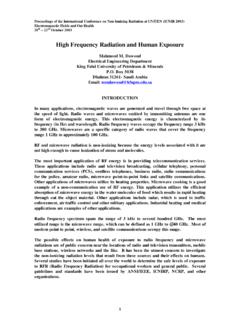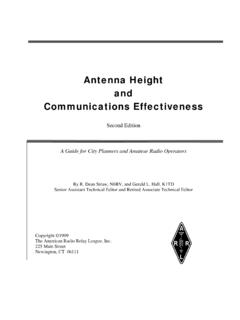Transcription of How Fast Are You Moving When You Are Sitting Still?
1 Universe in the Classroom No. 71 Spring 2007 Page 1No. 71 Spring 2007 2007, Astronomical Society of the Pacific 390 Ashton Avenue, San Francisco, CA 94112 How Fast Are You Moving When You Are Sitting Still? by Andrew Fraknoi Foothill College & the Astronomical Society of the PacificWhen, after a long day of running around, you finally find the time to relax in your favorite armchair, nothing seems easier than just Sitting still. But have you ever considered how fast you are really Moving when it seems you are not Moving at all?Daily MotionWhen we are on a smoothly riding train, we sometimes get the illusion that the train is standing still and the trees or buildings are Moving backwards.
2 In the same way, because we ride with the spinning Earth, it appears to us that the Sun and the stars are the ones doing the Moving as day and night alternate. But actually, it is our planet that turns on its axis once a day and all of us who live on the Earth s surface are Moving with it. How fast do we turn?To make one complete rotation in 24 hours, a point near the equator of the Earth must move at close to 1000 miles per hour (1600 km/hr). The speed gets less as you move north, but it s still a good clip throughout the United States. Because gravity holds us tight to the surface of our planet, we move with the Earth and don t notice its rotation1 in everyday great circular streams of water in our oceans and of air in our atmosphere give dramatic testimony to the turning of the Earth2.
3 As the Earth turns, with faster motion at the equator and slower motion near the poles, great wheels of water and air circulate in the northern and southern hemisphere. For example, the Gulf Stream, which carries warm water from the Gulf of Mexico all the way to Great Britain, and makes England warmer and wetter than it otherwise would be, is part of the great wheel of water in the North Atlantic Ocean. The wheel (or gyre) that the Gulf Stream is part of contains more water than all the rivers of the world put together. It is circulated by the energy of our turning planet. Yearly MotionIn addition to spinning on its axis, the Earth also revolves around the Sun.
4 We are approximately 93 million miles (150 million km) from the Sun, and at that distance , it takes us one year (365 days) to go around once. The full path of the Earth s orbit is close to 600 million miles (970 million km). To go around this immense circle in one year takes a Image credit: NASAThe Earth as seen by the Apollo 17 Crew on the way to the in the Classroom No. 71 Spring 2007 Page 2speed of 66,000 miles per hour (107 million km/hr)3. At this speed, you could get from San Francisco to Washington DC in 3 minutes. As they say on TV, please don t try going this fast without serious adult Sun s MotionOur Sun is just one star among several hundred billion others that together make up the Milky Way Galaxy.
5 This is our immense island of stars and within it, each star is itself Moving . Any planet orbiting a star will share its motion through the Galaxy with it. Stars, as we shall see, can be Moving in a random way, just milling about in their neighborhoods, and also in organized ways, Moving around the center of the we want to describe the motion of a star like our Sun among all the other stars, we run up against a problem. We usually define motion by comparing the Moving object to something at rest. A car moves at 60 miles per hour relative to a reference post attached to the Earth, such as the highway sign, for example. But if all the stars in the Galaxy are Moving , what could be the reference post to which we can compare its motion?
6 Astronomers define a local standard of rest in our section of the Galaxy by the average motion of all the stars in our neighborhood4. (Note that in using everyday words, such as local and neighborhood , we do a disservice to the mind-boggling distances involved. Even the nearest star is over 25 thousand billion miles (40 thousand billion km) away. It s only that the Galaxy is so immense, that compared to its total size, the stars we use to define our Sun s motion do seem to be in the neighborhood. )Relative to the local standard of rest, our Sun and the Earth are Moving at about 43,000 miles per hour (70,000 km/hr) roughly in the direction of the bright star Vega in the constellation of Lyra.
7 This speed is not unusual for the stars around us and is our milling around speed in our suburban part of the the GalaxyIn addition to the individual motions of the stars within it, the entire Galaxy is in spinning motion like an enormous pinwheel. Although the details of the Galaxy s spin are complicated (stars at different distances move at different speeds), we can focus on the speed of the Sun around the center of the Milky Way takes our Sun approximately 225 million years to make the trip around our Galaxy. This is sometimes called our galactic year . Since the Sun and the Earth first formed, about 20 galactic years have passed; we have been around the Galaxy 20 times.
8 On the other hand, in all of recorded human history, we have barely moved in our long path around the Milky fast do we have to move to make it around the Milky Way in one galactic year? It s a huge circle, and the speed with which the Sun has to move is an astounding 483,000 miles per hour (792,000 km/hr)! The Earth, anchored to the Sun by gravity, follows along at the same fantastic speed. (By the way, as fast as this speed is, it is still a long way from the speed limit of the universe the speed of light. Light travels at the unimaginably fast pace of 670 million miles per hour or billion km/hr.)Image credit: SOHOThe Sun, seen in ultraviolet light with instruments aboard the SOHO credit: NASA Marshall Space Flight Center (NASA-MSFC)The Sun travels with billions of other stars through the Milky Way Galaxy, which is thought to look much like the Andromeda Galaxy, pictured in the Classroom No.
9 71 Spring 2007 Page 3 Moving through the UniverseAs we discussed the different speeds of our planet so far, we always needed to ask, Compared to what are you measuring this motion? In your armchair, your motion compared to the walls of your room is zero. Your motion compared to the Moon or the Sun, on the other hand, is quite large. When we talk about your speed going around the Galaxy, we measure it relative to the center of the Milky we want to finish up by looking at the motion of the entire Milky Way Galaxy through space. What can we compare its motion to what is the right frame of reference? For a long time, astronomers were not sure how to answer this question.
10 We could measure the motion of the Milky Way relative to a neighbor galaxy, but this galaxy is also Moving . The universe is filled with great islands of stars (just like the Milky Way) and each of them is Moving in its own way. No galaxy is Sitting still! But then, a surprising discovery in the 1960s showed us a new way to think of our galaxy s Flash of the Big BangTo understand this new development, we have to think a little bit about the Big Bang, the enormous explosion that was the beginning of space, time, and the whole universe. Right after the Big Bang, the universe was full of energy and very, very hot. In fact, for the first few minutes, the entire universe was hotter than the center of our Sun.










